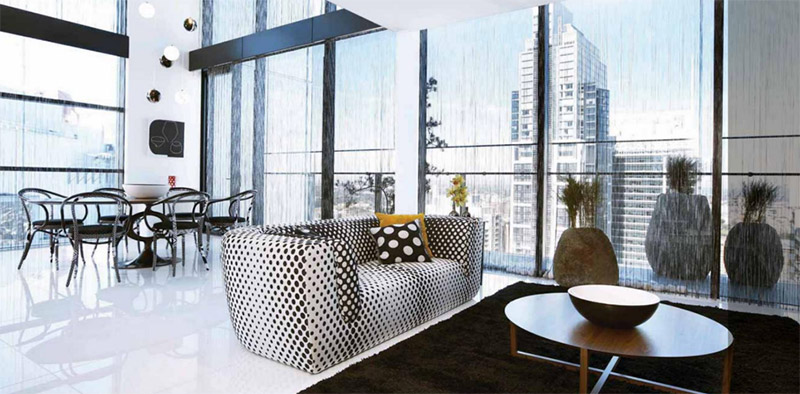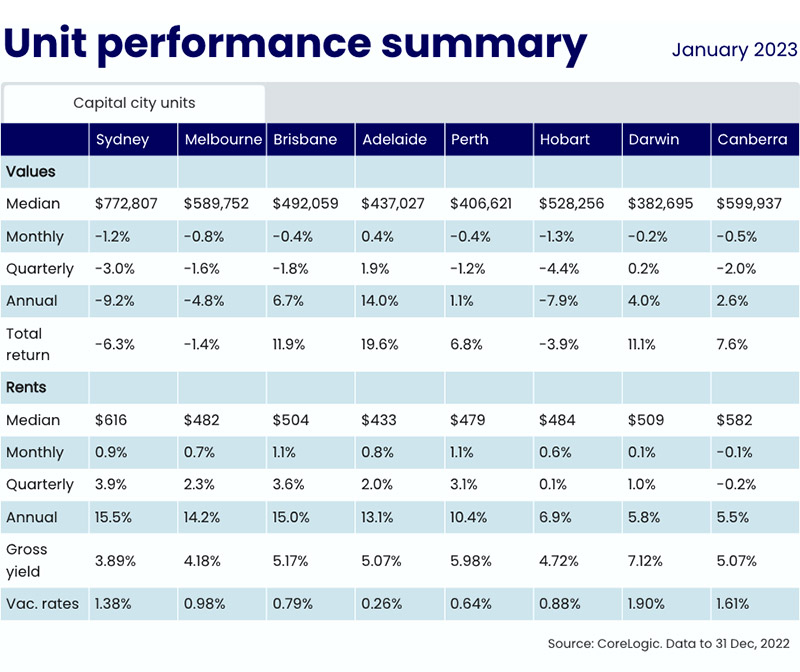Luxury Sydney, Melbourne townhouses defy price downturns
Townhouses and terraced homes, especially in the more expensive price ranges, are defying the property market downturns in Sydney and Melbourne.
As was the case in Victorian England, contemporary terraced apartment or townhouse developments in Australia are a solution to an urban shift.
But times have changed since such homes were the result of a mass convergence to the city to scrounge out a living.
Large numbers of terraced houses were built in the inner suburbs of large Australian cities, mainly between the 1850s and the 1890s.
In Sydney and Melbourne today, where they are most common, they cater to a desire for affordability, location, community, low-maintenance living and in some cases, luxury amenities.
Terraced homes in Sydney outpricing houses
Luxury terraced homes in the Sydney suburbs of Lindfield and Vaucluse have made headlines recently for record-breaking sale prices.
The median house price in Lindfield, for example, is $3.8 million. A terrace price record was set in 2022 by Plus Agency with the Wolseley Eight development, selling for $4.7 million, making terraces in the suburb more expensive than most Lindfield houses sold last year.
Terraced homes:
Typically upwards of two storeys, offering two to four bedrooms, and front and back gardens or courtyards. May be freestanding but more often shares neighbouring walls.
Townhouses:
A self-contained property, sometimes attached and sometimes freestanding, within a complex of three or more dwellings. The buyer owns the dwelling but shares ownership of the land and common property with other owners in the complex. Most are strata-titled.
Vaucluse homes can have $10 million price tags but townhouses with water views are available for $4 million to $5 million.
Buyers are evenly split among foreign residents avoiding land tax, upsizers priced out of houses, and downsizers who want less to maintain.
“This isn’t your grandmother’s terrace house, where you can stretch your arms out and touch the walls on either side,” Plus Agency general manager Peter Li told Australian Property Investor Magazine.
“Luxury terraces today are selling for more than single-family homes in the same suburb and are much more luxurious.
“Luxury apartments are not as well received as terraced because, in the premium market, buyers want to have their own front entrance; they want a house-like feel,” Mr Li said.
“Value for money is the first driver.
“The only reason people buy houses is size and ownership of the land underneath them, but people care less and less about that today and are more interested in what they can achieve,” Mr Li said.
Data released by Australian Bureau of Statistics in October 2022, showed detached house approvals rose 4.1 per cent to 10,459, while townhouse approvals lifted 99.1 per cent month-on-month to 6,766.
Melbourne townhouse demand strong
Nicholas Murray is the architect for the North Melbourne townhouse development Florenze Terrace, in which there are 18 five-storey townhouses.
“It’s like a Japanese model.
“They’re a small footprint but a lot of square meterage vertically, and roof decks on top as well,” Mr Murray told API Magazine.
“We bought the site a few years ago and put an apartment permit on it for 37 apartments and then with Covid we just found there was better demand for townhouses as opposed to apartments.

Nicholas Murray, Architect, Florenze Terrace
“People were just getting opposed to living stacked on top of each other; they were keener to have a parcel of dirt and no common area than to push lift buttons and get germs off those buttons.”
The Florenze townhouses are not super high spec’, priced below $2 million, but do feature in-wall cisterns, graphite coloured tapware, stone finishes, and timber floorboards.
“They’re high-end compared to most apartments,” he said.
The market for terraced houses has remained consistently strong in Melbourne.
“It’s grown the same as the housing market, as opposed to the apartment market that has really been quite steady and not grown unless they’re in the prime property $6 million - $10 million dollar range.
Buyers for this terrace project are predominantly empty nesters.
“We’ve sold over half of these, and mostly to empty nesters.
“Some people from the same suburb are just upgrading from an apartment or house, or wanting something brand new,” Mr Murray explained.
“It’s really hard as a developer to make them stack up.
“The only reason we made this stack up is because we put 18 of them on a thousand square metre site.
“A lot of time you would only get 12 on there, but we’ve made them vertical and that’s what made it feasible for us.”
Buyers are also looking for feasibility in their purchase.
That's not always easy in a market that raking seen some property make much as $1,000 a day for the past year, with others losing just as much.
The Hotspotting Price Predictor Index – Summer 2022-23 edition found buyers in Melbourne are chasing affordability, and that apartments are a dominant product based on median prices typically being $325,000 less than a house.
In fact, it now costs 86 per cent more to buy the average house than the average apartment, the widest gap ever recorded in Melbourne, and a price difference of $508,266, based on Domain figures.
“In the City of Melbourne, seven of the 10 suburbs analysed have rising or consistent sales levels.
“They include the Melbourne CBD, Carlton, North Melbourne, Docklands and Southbank,” the report said.
But for those looking to upgrade from a Melbourne apartment to something larger, the difficulty lies in overcoming the acceleration in price gaps that grew between apartments and other housing types during Covid.
Units shedding value but less so than houses
CoreLogic released unit sales data this week showing the current downturn, May to December 2022, shaved approximately $73,000 off the average Australian house value, compared to a decline of $32,400 in the average national unit value.
“Historically, house values have been more volatile than units, recording larger gains through the upswing and larger depreciation during a downswing. The current cycle has been no different,” CoreLogic Economist Kaytlin Ezzy said.
“As the downturn matures, the resilience of the unit market has now become evident in the annual growth trend, with the annual performance gap between house and unit values inverting for the first time since May 2020 in November (-50 basis points) and widening further in December (-150 basis points).”

The view from an $8 million penthouse in the Lumiere building.
Sydney remains the country's most expensive capital city unit market, with a median value of $772,807, despite an annual decline in value of 9.2 per cent.
Plus Agency sold an $8 million penthouse in the Lumiere building. They also set a NSW retail price record with a sale on Circular Quay.
“Single-level luxury penthouses are doing well,” Mr Li said.
“People just don’t want stairs.
“These penthouses also must have a view and be of sufficient size. A harbour view is the number one priority and if not that then some other water view or at least a view of a golf course or park.
“If you don’t have one of these then forget about it.”
Suburbs in Sydney’s Eastern Suburbs and Northern Beaches recorded the largest unit value declines, falling more than 20 per cent in some instances. Units in Centennial Park, Belrose and Vaucluse recorded declines of 23.8 per cent, 23.4 per cent and 23.1 per cent, respectively.

Peter Li, General Manager, Plus Agency
Unit values also fell below levels recorded this time last year in Melbourne (4.8 per cent).
Relative affordability, low supply levels, and the return of investors who typically prefer the medium to high-density sector, may shield unit values from the worst of the current downturn, Ms Ezzy said.
“As units approach the floor in values, the prospect of medium to long term capital gains, coupled with strong rental returns, could entice more investors.”
Hotspotting director Terry Ryder says many property growth markets remain around the nation, which contradicts the general negative sentiment over recent months.
“Our analysis of locations across the nation reveals numerous growth clusters that are resisting the downward trend described by some commentators,” Mr Ryder said.
The Index compares Sydney suburbs with good sales momentum showing median unit prices remaining strong in Chippendale ($820,000 compared to the median house price at $1.7 million), Kogarah ($810,000 compared to $2.8 million) and Roseberry ($885,000 compared to $2.1 million).





















